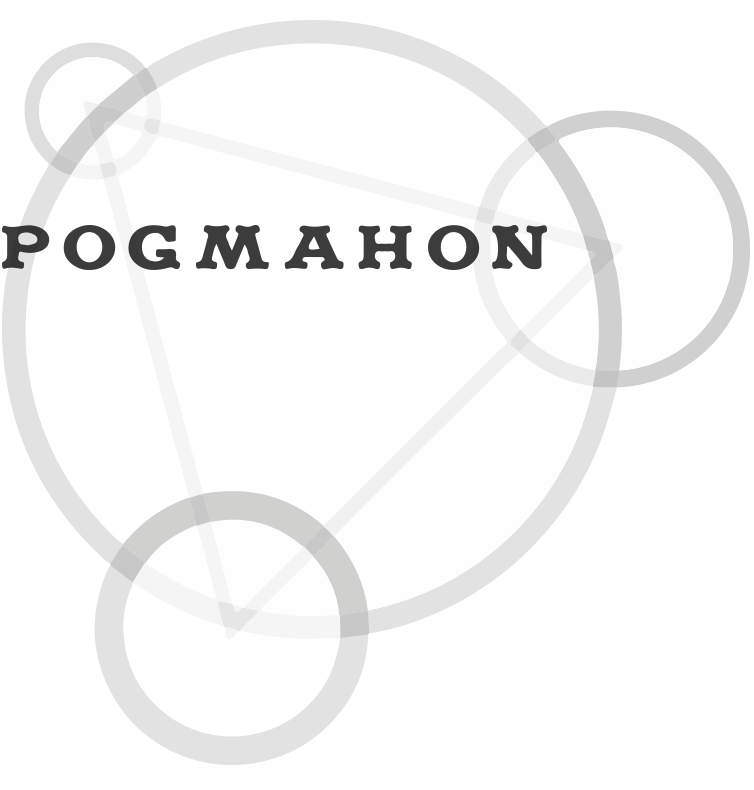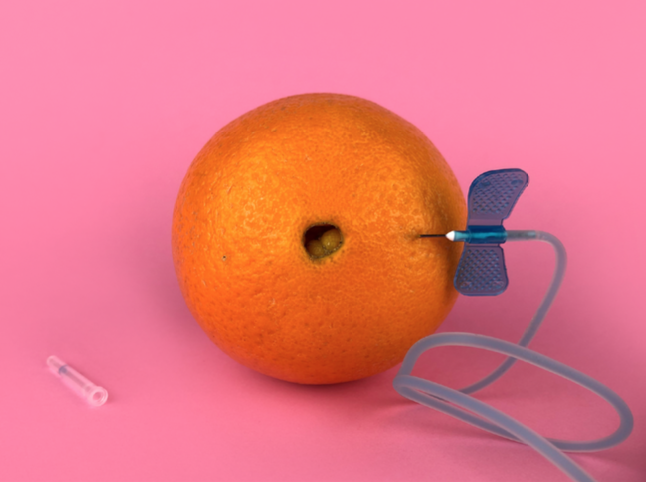Who Wanna Live Forever
Altern im 21. Jahrhundert
Art & Science Exchange Austria & Slovenia
2024-WWL4E_Cataloge_WEB
Ljubljana & Koper & Vienna/Slowenia May 2024/2025
Paula Flores & Anna Lerchbaumer
Mexico/Austria
Zoran Srdić Janežič & Tilen Žbona Slovenia
Curated by/Kuratiert von Denise Parizek & Jiři Kočica
Vernissage 4.7.2024
Ausstellungsdauer 5. – 22.7.2024
Öffnungszeiten:
06.07., 13.07. 2024 10 – 12 am
09., 11., 18., 20.7. 2024 6 – 8 pm
Kooperationen: MA7, 1150 Bezirkskultur, ACF Ljubljana, Skica Wien, Bildrecht
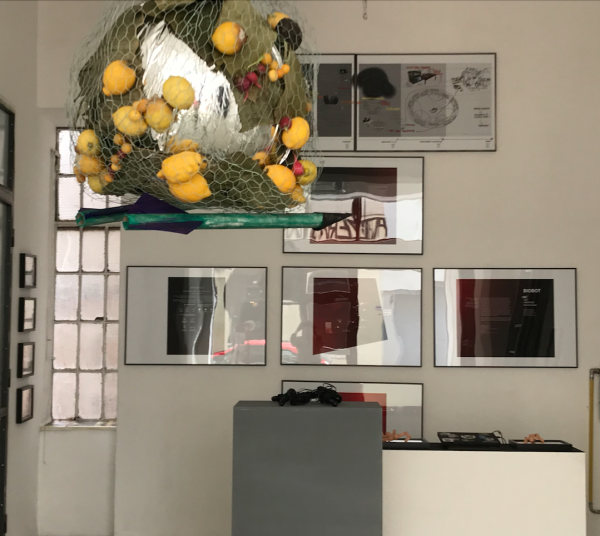
Pictures of the exhibition
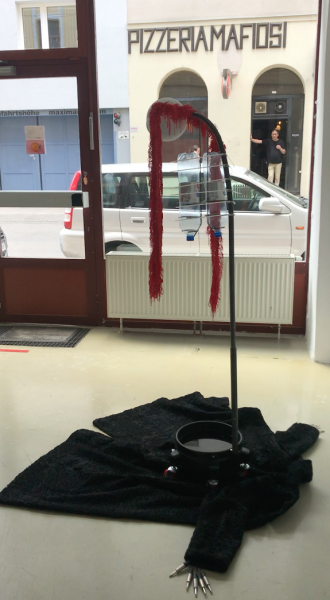
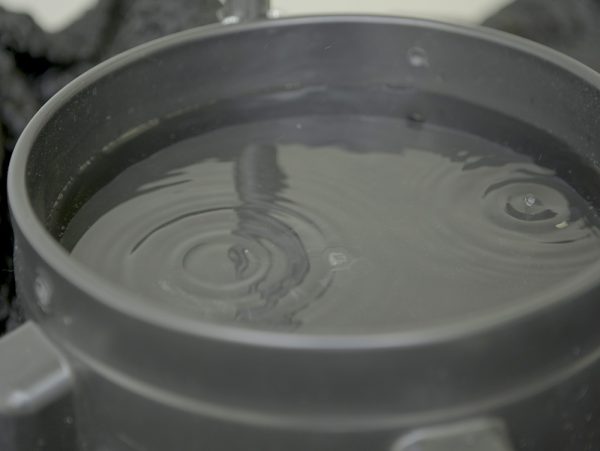
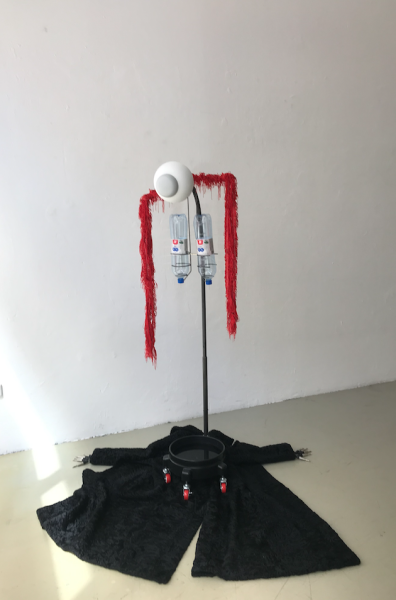
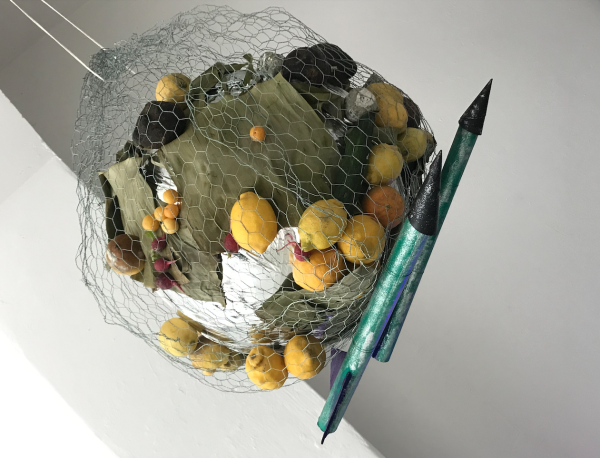
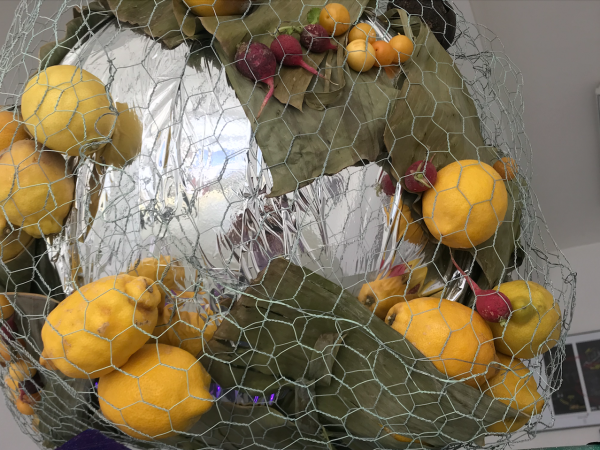
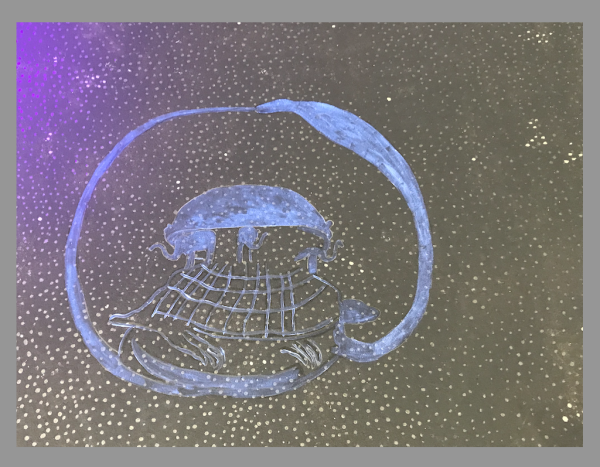
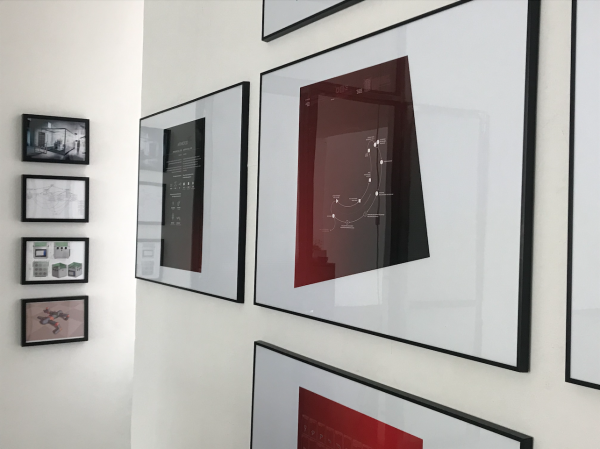
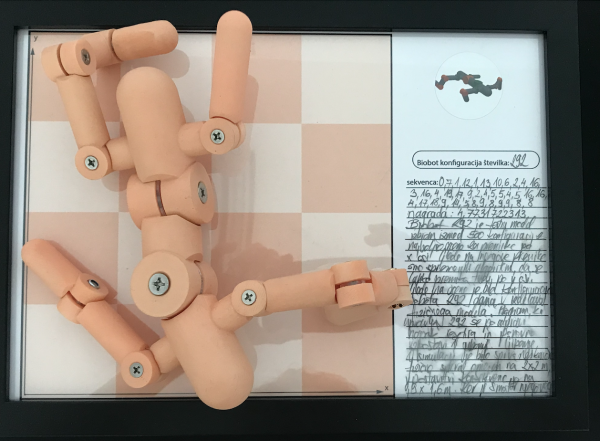
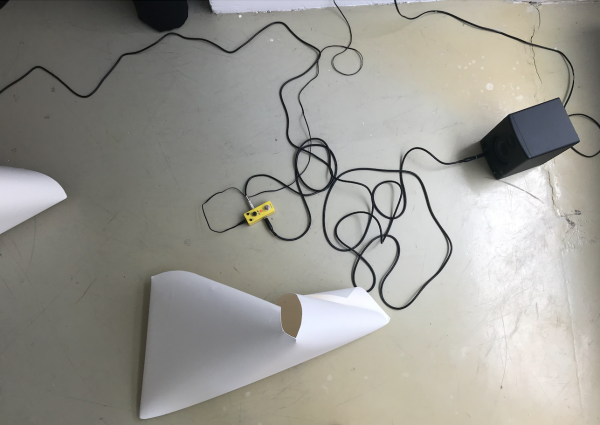
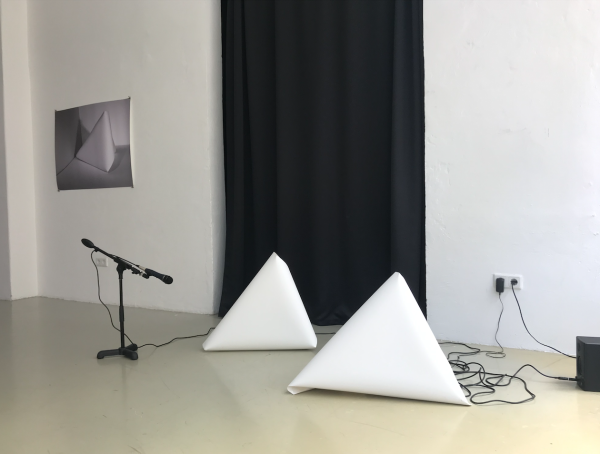
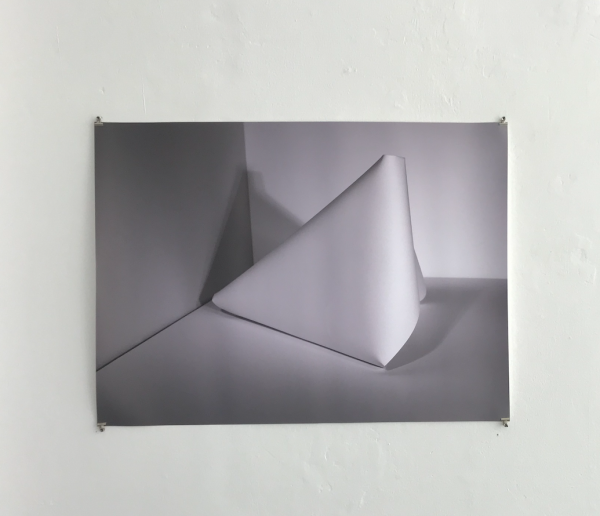
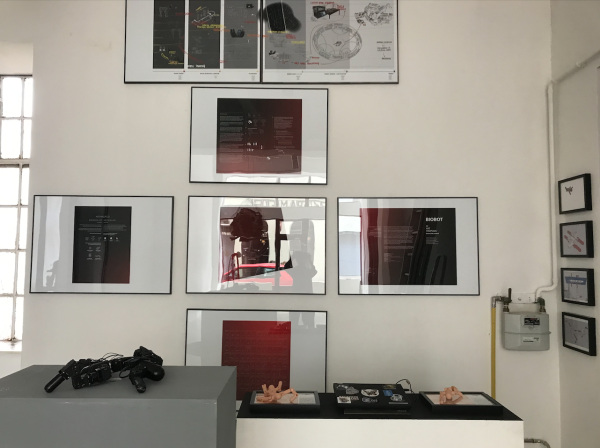
Copyright by MuteInsurgent 2024
SUMMARY / ZUSAMMENFASSUNG
Who wanna live forever is a bilateral project, a collaboration between two Art & Science graduates living in Vienna, Paula Flores and Anna Lerchbaumer, and two artists from the Art & Science Departments in Koper and Ljubljana, Slovenia. The project includes a show in Vienna 2024, eindorf 2024, as well as one in Ljubljana and Koper 2025.
The exhibition covers various topics – from demographic change, the ageing population, the Dorian Gray syndrome, cosmism, life in the age of AI, genetic engineering and migration. These themes manifest themselves both on the micro level of daily life in (Central European) countries and on the global macro level.
Who wanna live forever ist ein bilaterales Projekt, eine Zusammenarbeit zweier in Wien lebender Art & Science Absolventinnen, Paula Flores und Anna Lerchbaumer und zwei Künstlern der Art & Science Departments in Koper und Ljubljana, Slowenien. Das Projekt beinhaltet eine Show in Wien 2024, eindorf 2024, sowie eine in Ljubljana und Koper 2025.
Die Ausstellung umfasst verschiedene Themen – vom demographischen Wandel, der Überalterung der Bevölkerung, dem Dorian Gray Syndrom, Cosmismus, dem Leben im Zeitalter von KI, Gentechnik, Migration. Diese Themen manifestieren sich sowohl auf der Mikroebene des täglichen Lebens in den (mitteleuropäischen) Ländern als auch auf der globalen Makroebene.
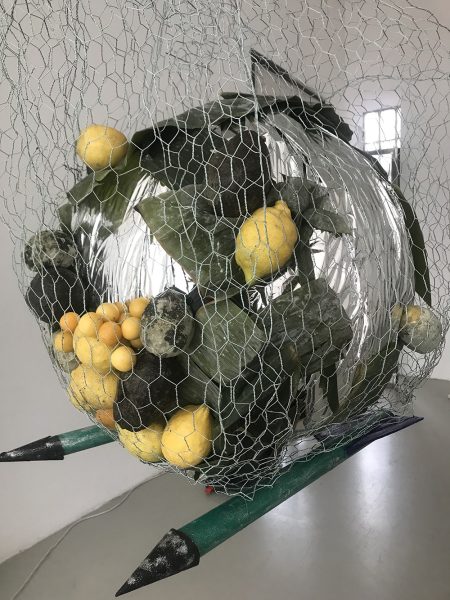
METHODOLOGY/ METHODIK
Artists search and wander through different systems, fields, different areas of human activity, they try to represent certain scientific processes symbolically, sometimes allegorically. Sometimes artists ‘speak’ with the language of Duchamp – they translate certain scientific processes directly into gallery spaces and make them available to the public’s interpretation. In doing so, they set in motion a rethinking or change of perspective in the viewer.
The presentation consists of 4 artistic positions, performative series of experiments for the audience and tours for adults and children guided by the artists.
A brochure on the topic will round off the project and be given to visitors.
Künstler.innen suchen und wandern durch verschiedene Systeme, Felder, verschiedener Bereiche menschlicher Tätigkeit, sie versuchen, bestimmte wissenschaftliche Prozesse symbolisch, manchmal allegorisch, darzustellen. Manchmal “sprechen” Künstler.innen mit der Sprache Duchamps – sie übersetzen bestimmte wissenschaftliche Prozesse direkt in Galerieräume und machen sie der Interpretation des Publikums verfügbar. Damit setzen sie ein Überdenken bzw. Perspektiv Wandel im Betrachter in Bewegung.
Die Präsentation besteht aus 4 künstlerischen Positionen, performativen Versuchsreihen für das Publikum und von den Künstler:innen geführte Touren für Erwachsene und Kinder.
Eine Broschüre zum Thema wird das Projekt abrunden und den Besucher:innen mitgegeben.
OBJECTIVE / ZIELSETZUNG
One of the perspectives from which the problems are examined and from which certain solutions, proposals and ways of dealing with these issues emerge is the significantly increased interest of artists in science and in scientific findings or research. The language of art is thus constantly changing, growing, searching for ways and possibilities for action, developing models, theories and forming a language with which the problems of the modern world can be recognised and consequently also introduced into society as a proposal for new ways of self-organisation and self-reflection of social systems.
Eine der Perspektiven, aus der die Probleme untersucht werden und von der aus bestimmte Lösungen, Vorschläge und Wege zum Umgang mit diesen Fragen auftauchen, ist das deutlich gestiegene Interesse der Künstler an der Wissenschaft und an wissenschaftlichen Erkenntnissen oder Forschungen. Die Sprache der Kunst verändert sich also ständig, sie wächst, sucht nach Wegen und Handlungsmöglichkeiten, entwickelt Modelle, Theorien und formt eine Sprache, mit der die Probleme der modernen Welt erkannt und folglich auch als Vorschlag für neue Wege der Selbstorganisation und Selbstreflexion sozialer Systeme in die Gesellschaft eingebracht werden können.
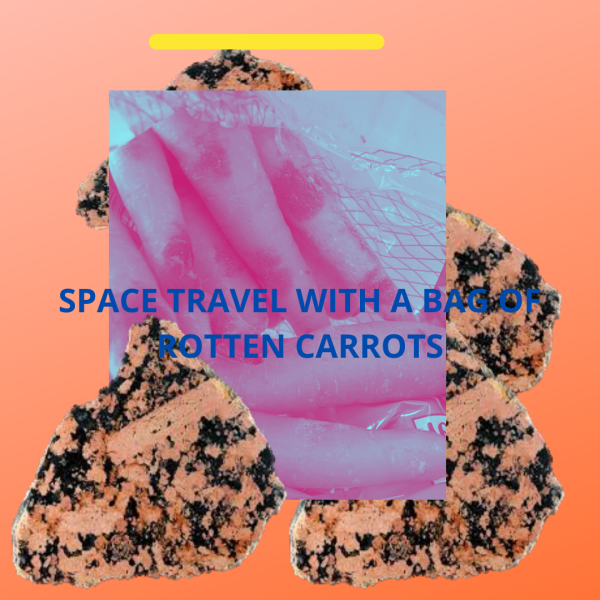
BACKGROUND / HINTERGRUND
The myths of eternal youth and immortality run like a red thread through the centuries, from blood sacrifices, the blood countess, to Elon Musk’s fantasies of his eternity and the conspiracy theories during the Covid pandemic, which told of underground tunnel systems where children were locked up to vegetate as blood preserves.
Demographic forecasts in both Slovenia and Austria show that the ageing population cannot be halted by immigration alone. Birth rates are declining in both countries, and due to the problems of climate change and socio-political uncertainties, birth rates will not increase in the near future.
The desire for immortality is on the rise, especially in wealthy circles.
For example, Dorian Gray Syndrome (DGS), which refers to a cultural and social phenomenon characterised by a man’s extreme pride in his personal appearance and the fitness of his body, which is accompanied by difficulties in coping with the demands of psychological maturation and the ageing of his body. DGS is characterised by a triad of symptoms that overlap and thus combine diagnostic signs of dysmorphophobia, narcissistic traits and the immaturity of disturbed development.
The syndrome is mainly associated with white, affluent people who consume cosmetic products and services, hair growth products, sexual enhancers and cosmetic surgery.
Or stem cell therapy, in which stem cells are regenerated and re-injected into the body with the promise of improved organ function and rejuvenation.
The 19th century Russian philosopher Nikolai Fedorov, whose posthumously published text put forward the bold thesis that death was little more than a design flaw – a flaw that could be corrected by advances in science and technology. Fedorov also believed that this goal of correction – to achieve immortality – would unite social groups whose mutual fear of death had historically brought them together.
‘Our task,’ Fedorov wrote, ‘is to turn nature, the blind force of nature, into an instrument of universal revitalisation and to become a union of immortal beings.’
This visionary philosophical movement became known as Cosmism. It emerged during the Industrial Revolution – a time of unprecedented social change – and sought to redefine humanity’s relationship to technology and progress, with the ultimate goal of regulating the forces of nature so that humanity could achieve unity and immortality. The movement offered a more spiritual alternative to both Futurism and Communism.
Although interest in Russian Cosmism quickly faded, the movement has gained new life in the 21st century. It is perhaps even more relevant today than it was at the beginning of the 20th century. Fedorov and Svyatogor’s joint call for space colonisation to save humanity from earthly disasters, for example, is a direct parallel to Elon Musk’s promise to put humans on Mars.
The artists, curators and we also ask the audience why people long for eternal life and what they are prepared to do for it.
Die Mythen der ewigen Jugend und Unsterblichkeit ziehen sich wie ein roter Faden durch die Jahrhunderte, von Blutopfern, der Blutgräfin, bis zu Elon Musks Phantasien seiner Ewigkeit und den Verschwörungstheorien während der Covid-Pandemie, in der von unterirdischen Tunnelsystemen erzählt wurde, wo Kinder eingesperrt als Blutkonserven dahinvegetieren.
Demografische Prognosen zeigen sowohl in Slowenien als auch in Österreich, dass die Überalterung der Bevölkerung nicht allein durch Zuwanderung aufgehalten werden kann. Die Geburtenraten sind in beiden Ländern rückläufig, und aufgrund der Probleme des Klimawandels und der soziopolitischen Unsicherheiten werden die Geburtenraten in naher Zukunft nicht steigen.
Der Wunsch nach Unsterblichkeit nimmt zu, vor allem in den Kreisen der Reichen.
Zum Beispiel das Dorian-Gray-Syndrom (DGS), das ein kulturelles und gesellschaftliches Phänomen bezeichnet, welches durch den extremen Stolz eines Mannes auf sein persönliches Erscheinungsbild und die Fitness seines Körpers gekennzeichnet ist, der mit Schwierigkeiten bei der Bewältigung der Anforderungen der psychologischen Reifung und des Alterns seines Körpers einhergeht. Das DGS ist durch eine Trias von Symptomen gekennzeichnet, die sich überschneiden und so diagnostische Anzeichen von Dysmorphophobie, narzisstischen Charakterzügen und der Unreife einer gestörten Entwicklung kombinieren.
Das Syndrom wird vor allem mit weißen, wohlhabenden Menschen in Verbindung gebracht, die kosmetische Produkte und Dienstleistungen, Haarwuchsmittel, Potenzmittel und Schönheitsoperationen konsumieren.
Oder die Stammzelltherapie, bei der Stammzellen regeneriert und in den Körper wieder injiziert werden, die eine Verbesserung der Organfunktionen und eine Verjüngung versprechen.
Der russischen Philosoph des 19. Jahrhunderts, Nikolai Fedorov, dessen posthum
veröffentlichten Text die gewagte These aufstellte, dass der Tod kaum mehr als ein Konstruktionsfehler sei – ein Fehler, der durch Fortschritte in Wissenschaft und Technik zu beheben sei. Fedorov glaubte auch, dass dieses Ziel der Korrektur – die Unsterblichkeit zu erlangen – gesellschaftliche Gruppen vereinen würde, deren gegenseitige Angst vor dem Tod sie historisch gesehen zueinander gebracht hatte.
“Unsere Aufgabe”, schrieb Fedorov, “ist es, die Natur, die blinde Kraft der Natur, zu einem Instrument der universellen Wiederbelebung zu machen und eine Vereinigung unsterblicher Wesen zu werden.” Diese visionäre philosophische Bewegung wurde als Cosmismus bekannt. Sie entstand während der Industriellen Revolution – einer Zeit beispiellosen gesellschaftlichen Wandels – und versuchte, die Beziehung der Menschheit zu Technologie und Fortschritt neu zu definieren, mit dem letztendlichen Ziel, die Kräfte der Natur so zu regulieren, dass die Menschheit Einheit und Unsterblichkeit erreichen kann. Die Bewegung bot eine spirituellere Alternative sowohl zum Futurismus als auch zum Kommunismus.
Obwohl das Interesse am russischen Cosmismus schnell erlosch, hat die Bewegung im 21. Jahrhundert neues Leben gewonnen. Vielleicht ist sie heute sogar aktueller als zu Beginn des 20. Jahrhunderts. Fedorovs und Swjatogors gemeinsamer Aufruf zur Besiedlung des Weltraums, um die Menschheit vor irdischen Katastrophen zu bewahren, ist zum Beispiel eine direkte Parallele zu Elon Musks Versprechen, Menschen auf den Mars zu bringen.
Die Frage warum Menschen sich nach dem ewigen Leben sehnen und was sie dafür zu tun bereit sind, stellen sich die Künstler:innen, Kurator:innen und wir fragen auch das Publikum.
Through the years in my work I have explored my and our (as a whole) relationship with nature. As someone that was born and raised in an industrial city, the border city of Tijuana my ties with nature were controlled within the city landscape, the other ties were from unknown lands and times that I relived through my grandparents stories of when they were young and the countless adventures at my grandparents garden and ranch or other places in the area of Tecate where we would go for walks and hikes that allowed me to see other dimensions. My relationship with nature always felt magical. I always envisioned these moments that they, my grandparents, described so carefully when they were reliving their childhood memories. Their vocabulary was filled with references of nature and all the beings that inhabit within. Myself being from a city didn’t fully understand all of these poetic ways of nature that overflow into language, culture and behaviour that allow oneself to find its place in the world. Now that years have passed since I have heard those stories. I can still see some of those images in my mind. Now through my work I find myself exploring these connections that for many of us have not been part of our life because we grew up with new visions and understanding of what nature is. How can I, we people from the cities, reconnect with nature? How can we make ourselves feel part of it again and not something that is next to us close or far away? Through my art work I investigate the hierarchies that humans have created within the natural world, the concepts that we have created to dissect and categorize to our benefit all entities that make up not just our physical world, but the whole cosmos. Trying to deep dive into developing our abilities of communication and the establishment of meaningful reciprocal relationships with other beings, other entities. Through the practice of painting, sculpture, installation and performance and using a diversity of material from organic to inorganic and from “living to non living”. I question the limits that we have imposed on ourselves with the concepts that we have created and look for flexible ways to create new understandings and new ways of existing.
Using rocks, branches, plants, bacteria, fungi as guides, storytellers of the history of the world and the symbiotic relationships that had to be established and kept in balance for the existence of what we know as nature I explore our understandings of who we are as humans out and inside of the natural world by applying the role of the mediator and inverting it in all ways possible to me. Pushing myself to leave the concepts and comfort of what it is to be either, or.
IDEA
The eternal spirits. Healing our human spirits with and through animal and plant spirits. Ingesting their power, strengths, knowledge, abilities. Through time and cultures, humans have hunted and foraged plants and animals to be able to partake of their spirits. To have some of the qualities that either the plant or animal has or to use them as connectors with higher beings. With this I open the question of how much do we take care of our spirit? How much do we consider other non-human spirits?
The spirit is said to be eternal, never ending. It is the only part/component/inhabitant of the body that has the ability to leave once the body has come to an end. It is our only way to be eternal.
Establishing relationship with non human entities.
Paula Flores ist installative Künstlerin, die sich in ihren Arbeiten sehr mit der Verbindung zwischen Mensch und Natur beschäftigt. Aufgewachsen in der Industriestadt Tijuana erforscht sie die Wurzeln alter Riten und die Bedeutung der Pflanzen über die Jahrhunderte. Sie bezieht sich auf die Erzählungen ihrer Großeltern ebenso wie auf Mythen der verschiedenen Kulturen Mexikos.
Durch ihre Projekte erforscht sie diese Verbindungen, die für viele von uns nicht Teil unseres Lebens waren, weil wir mit neuen Visionen und einem anderen Verständnis von Natur aufgewachsen sind. Wie kann ich, wie können wir Städter uns wieder mit der Natur verbinden? Wie können wir uns wieder als Teil von ihr fühlen und nicht als etwas
IDEE
Die ewigen Geister. Unseren menschlichen Geist mit und durch Tier- und Pflanzengeister heilen. Ihre Kraft, Stärke, ihr Wissen und ihre Fähigkeiten aufnehmen. Im Laufe der Zeit und der Kulturen haben die Menschen Pflanzen und Tiere gejagt und geerntet, um an ihren Geistern teilzuhaben. Um einige der Qualitäten zu besitzen, die die Pflanze oder das Tier hat, oder um sie als Verbindung zu höheren Wesen zu nutzen. Damit eröffne ich die Frage: Wie sehr kümmern wir uns um unseren Geist? Wie sehr berücksichtigen wir andere nicht-menschliche Geister? Der Geist gilt als ewig, als unendlich. Er ist der einzige Teil/Bestandteil/Bewohner des Körpers, der die Fähigkeit hat, ihn zu verlassen, sobald der Körper zu Ende ist. Er ist unsere einzige Möglichkeit, ewig zu sein.
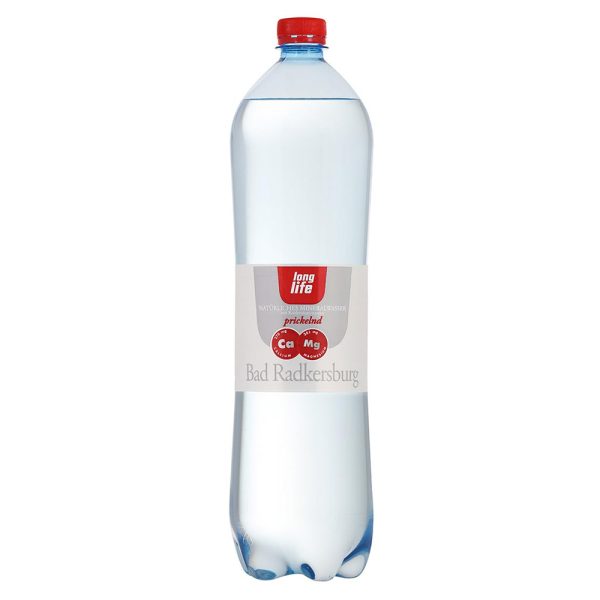
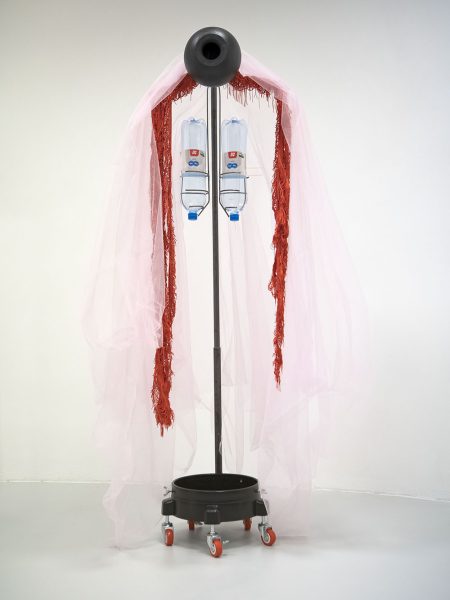
Anna Lerchbaumer is a visual artist living in Vienna. In her research and artistic practice, she echoes the relationship between nature and technology. An examination of raw materials often found or obsolescent and an exploration of the sonic and spacial possibilities they offer. Anna creates multi-media installations and sound performances in which sculptural aspects play an important role. She spans a field between visual art, music and performance. Objects become instruments, balloons become performers and field recordings become installations. She reveals the poetic in the everyday and makes it audible and visible. A change of perspective, a desecration of electrical devices and a possibility to rethink the things surrounding us.
IDEA
I am planning a sculptural installation that deals with efforts to live a long life. Illness and aging are often perceived as an individual phenomenon rather than an uncontrollable biological reaction. Western medicine and alternative herbs as well as vitamins, various rituals, many things promise a longer life. When cornered by illness, an affirmation of life can mean trying anything that promises a longer life. A collection of theories and routines aimed at minimising the damage from impending decline.
An approach to pain, death, life and the culpability of living conditions as they manifest in the body.
Anna Lerchbaumer ist bildende Künstlerin, die in ihren Arbeiten über die Beziehung zwischen Umwelt, Mensch und Technologie nachdenkt. Sie arbeitet mit dem Handwerk des Drechselns, mit Klang und gefundenen Objekten. Sie schafft raumgreifende Installationen, in denen der skulpturale Aspekt eine wichtige Rolle spielt. Sie bewegt sich in einem Bereich zwischen Performance, Musik und bildender Kunst. Ihre gedrechselten Holzskulpturen haben eine spielerische Anmutung, und sie kombiniert die rohen materiellen Dinge räumlich und akustisch, um humorvolle und kritische Verbindungen zu schaffen. Seit 2021 ist sie Mutter von Zwillingen. Einzelausstellungen, Ausstellungsbeteiligungen und Performances wurden im Rahmen der Krinzinger Projekte, bei der Ars Electronica und der Vienna Art Week sowie im Ausland in China, Indien und Japan gezeigt. 2022 wurde sie mit dem Förderungspreis für zeitgenössische Kunst des Landes Tirol und dem Hilde-Zach-Stipendium der Stadt Innsbruck ausgezeichnet.
IDEE
Ich plane eine skulpturale Installation, die sich mit den Bemühungen um ein langes Leben beschäftigt.
Krankheit und Alterung werden oft als individuelles Phänomen wahrgenommen und nicht als unkontrollierbare biologische Reaktion. Westliche Medizin und alternative Kräuter sowie Vitamine, verschiedene Rituale, vieles verspricht ein längeres Leben. Wenn man durch Krankheit in die Enge getrieben wird, kann Lebensbejahung bedeuten, alles zu versuchen, was ein längeres Leben verspricht. Eine Sammlung von Theorien und Routinen, die darauf abzielen, den Schaden des drohenden Verfalls zu minimieren. Eine Annäherung an Schmerz, Tod, Leben und die Schuld der Lebensbedingungen, wie sie sich im Körper manifestieren.
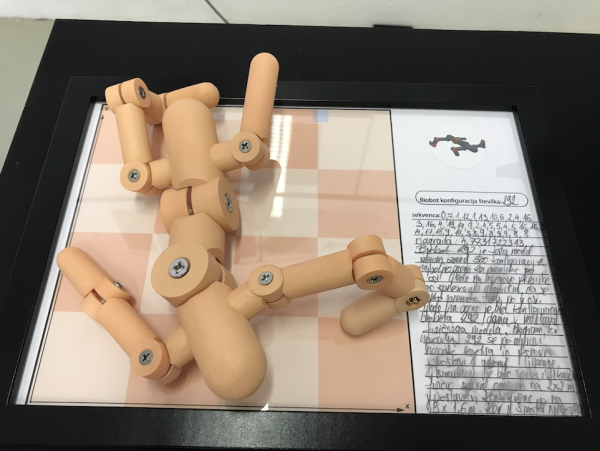
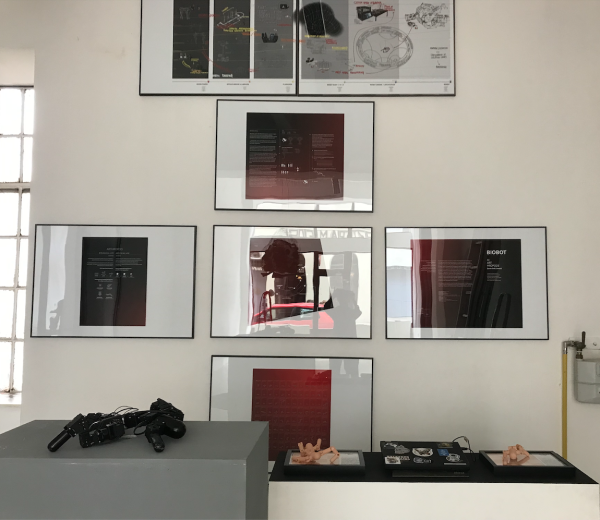
Zoran Srdič Janežič is an academic sculptor, intermedia artist, and puppet designer. In his artwork he uses new materials and technologies: animatronics, 3D virtual design, and animation, moving mechanisms in combination with biological systems and biotechnologies. He has had more than 20 solo exhibitions and has participated in numerous group exhibitions and residencies in Slovenia and abroad. Some of his sculptures are parts of permanent collections in prominent galleries. He has received the awards for his sculptural work as well as designed a permanent public monument.
IDEA
Upgrade the idea of »Biobot«, where the team of experts, together with the author, grows fat cells, transformed into neurons, on an electrode array (MEA). The neurons trigger the robot to move in space with their electrical signals, much like a brain on a chip. Through a sensitive and complex sensing and programming system, the signal from the neurons is converted from analogue to digital. It is then amplified and used by AI and the author to find the most appropriate shape of the bot, according to its task of specific movement.
To determine the shape of the Biobot, the AI program uses the output signals from the neurons and compares them with possible leg movements from a library of different arthropods. From these juxtapositions, the AI deduces the appropriate amount of joints and limbs and suggests the most optimal skeletal constitutions for movement. The results are reflected in the shapes of the unpredictable zoomorphic bodies, offered by the AI and chosen by the artist who follows his interest in handicapped movement. The algorithmic search for the shape of the bot, based on the stimulated biological activity (of iterations of signals from the brain organelle), is shown to be an unregulated evolutionary process. The possibilities of a hybrid bio-cybernetic aliveness with its own aesthetics, intelligence, and movement open up before us.
Part of the process of working on the idea of Biobot will be presented in the gallery in a similar way as it was presented at Ars Electronica, but to the extent that the gallery space will allow. A certain direction of work, which enables the search in the direction of hybridization, internal body modification and the search in the direction of improvements in neurological processes in connection with artificial intelligence, but also in the direction of the search for special prosthetics, the possibility of strengthening neural connections in possible treatment processes, etc.
It is very likely that there will be at least one short lecture during the course of the exhibition, which will contain elements of performance.
Zoran Srdič Janežič ist ein akademischer Bildhauer, Intermedia-Künstler und Puppendesigner. In seinen Werken verwendet er neue Materialien und Technologien: Animatronik, virtuelles 3D-Design und Animation, bewegliche Mechanismen in Kombination mit biologischen Systemen und Biotechnologien. Er hatte mehr als 20 Einzelausstellungen und hat an zahlreichen Gruppenausstellungen und Aufenthalten in Slowenien und im Ausland teilgenommen. Einige seiner Skulpturen sind Teil der ständigen Sammlungen bedeutender Galerien. Er wurde für sein bildhauerisches Werk ausgezeichnet und hat ein dauerhaftes öffentliches Denkmal entworfen.
IDEE Die Idee von “Biobot” besteht darin, Fettzellen zu züchten, die auf einer Elektrodenanordnung (MEA) in Neuronen umgewandelt werden. Die Neuronen veranlassen den Roboter mit ihren elektrischen Signalen dazu, sich im Raum zu bewegen, ähnlich wie ein Gehirn auf einem Chip. Durch ein empfindliches und komplexes Abtast- und Programmiersystem wird das Signal der Neuronen von analog in digital umgewandelt. Eine bestimmte Arbeitsrichtung, die die Suche in Richtung Hybridisierung, innere Körpermodifikation und die Suche in Richtung Verbesserung neurologischer Prozesse in Verbindung mit künstlicher Intelligenz ermöglicht, aber auch in Richtung der Suche nach spezieller Prothetik, der Möglichkeit der Stärkung neuronaler Verbindungen in möglichen Behandlungsprozessen.
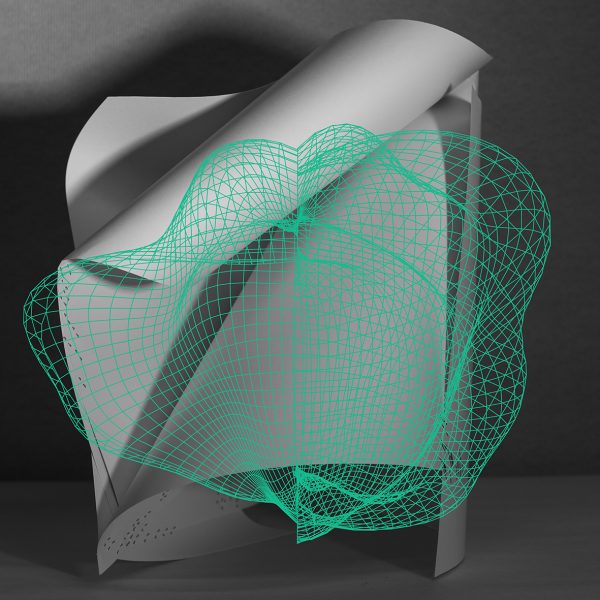
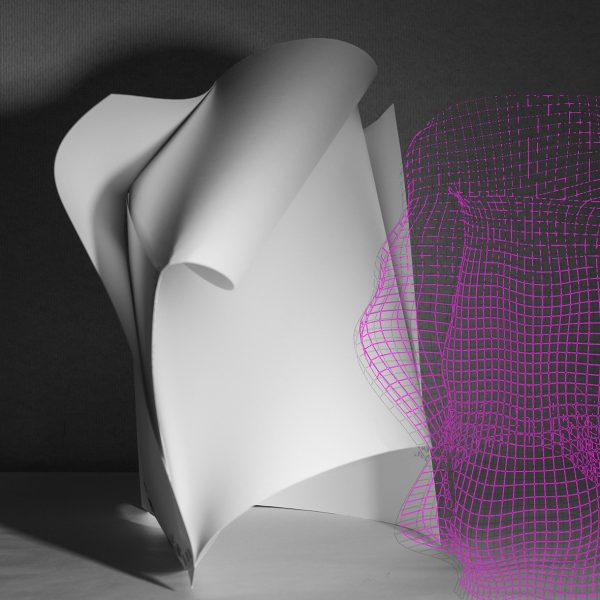
Born on August 31, 1976, in Koper, completed his studies at the Academy of Fine Arts in Venice (Accademia di Belle Arti di Venezia) with a major in painting, under the guidance of Professor Carlo Di Raco. In 2001, he graduated in the psychology of art under Professor A. Giuffredi.
In 2011, he received recognition for significant artistic work in the field of video and new media. He teaches at the University of Primorska at the Faculty of Education and at the Faculty of Visual Arts and Design.
Since 2015, he has been elected as a member of the University Art Observatory of the Rectors’ Conference of the Republic of Slovenia (UUO RKRS). He participated at the Venice Biennale, the Istanbul Biennial, the London Biennale, and the Pixxelpoint Festival in Nova Gorica. He has held numerous solo exhibitions in Slovenia and around the world.
IDEA
Development of sound scanning of an object and visualization of this process in a digital environment. Reflection on its connection, on one hand, with de Broglie’s idea that matter is also wave-like, and on the other hand, with the fact that waves strongly influence living matter (e.g., cell formation and arrangement in living substances). Link to information: https://technology-outlook.satw.ch/en/showcases/implants-from-a-loudspeaker
Tilen Žbona schloss sein Studium an der Akademie der Schönen Künste in Venedig (Accademia di Belle Arti di Venezia) mit dem Hauptfach Malerei unter der Leitung von Professor Carlo Di Raco ab. Im Jahr 2001 machte er seinen Abschluss in Kunstpsychologie bei Professor A. Giuffredi. Im Jahr 2011 erhielt er eine Anerkennung für seine bedeutende künstlerische Arbeit im Bereich Video und neue Medien. Er lehrt an der Universität Primorska an der Fakultät für Erziehungswissenschaften und an der Fakultät für Bildende Kunst und Design. Seit 2015 wurde er zum Mitglied des University Art Observatory der Rektorenkonferenz der Republik Slowenien (UUO RKRS) gewählt. Er nahm an der Biennale von Venedig, der Istanbul Biennale, der London Biennale und dem Pixxelpoint Festival in Nova Gorica teil. Er hatte zahlreiche Einzelausstellungen in Slowenien und auf der ganzen Welt.
IDEE
Die Arbeit von Tilen Žbona basiert auf der Offenlegung und Entdeckung der Materialisierung in Bezug auf die Dematerialisierung des physischen künstlerischen Artefakts. Zu diesem Zweck wurde eine Form konstruiert, die auf der Schaffung eines visuellen Codes basiert und die Latenz der Form in den Erfahrungsdiskurs einführt. In diesem Zusammenhang wurden im Labor des Inno Renew CoE unter der Leitung von Dr. Rok Prislan Klangmessungen durchgeführt, wobei eine Methode des Klangscannings angewandt wurde. Objekte wurden gescannt – physische Formen wurden entmaterialisiert und in eine neu konstruierte, immaterielle digitale Form übertragen. Auf diese Weise entstanden Klangskulpturen und ihre Datensätze, die ähnlich wie die materielle Materie als visuelle “Formen” in Form von Tonaufzeichnungen fortbestehen können, da sie als Wellen an bestimmte Orte im Raum übertragen werden. Die Betrachtung der Übertragung der materiellen Welt in eine digitale Form ist eine Art Übergang in den “Code”, ein Übergang in eine zunehmend vernetzte Welt der kodierten Realität, die eine neue Form der Ewigkeit in Bezug auf die alltägliche Erfahrung formt.
Curators / Kuratoren
Freelance curator and author for Revista Arta since 2000. Since 2023 she has mainly exhibited abroad. She values boundless collaboration and thinking without limits. Through her travelling exhibitions, Balkan Road Show, Balkan Performance Tour, Wittgenstein, Trauma and others, she brings together international artists, curators and institutions with the artists who have been part of the exhibitions abroad for years. Her thematic focus is on the connection between history, philosophy, environment and science and the importance of the artist as a seismograph of society.
Seit 2000 freiberufliche Kuratorin und Autorin für Revista Arta. Seit 2023 stellt sie hauptsächlich im Ausland aus. Sie legt wert auf grenzenlose Zusammenarbeit und Denken ohne Limit. Durch ihre Wanderausstellungen, Balkan Road Show, Balkan Performance Tour, Wittgenstein, Trauma u.a. bringt sie internationale Künstler:innen, Kurator:innen und Institutionen mit den Künstler:innen zusammen, die bereits seit Jahren Teil der Auslandsausstellungen sind. Ihr thematischer Fokus liegt auf der Verbindung zwischen Geschichte, Philosophie, Umwelt und Wissenschaft und der Bedeutung der/s Künstlers:innen als Seismograph der Gesellschaft.
Freelance artist and professor of fine arts and design in Ljubljana and Koper. He has been working for years with artists and curators living in Vienna, such as Vasja Nagy, Denise Parizek, Agnes Hamvas and Hubert Hasler, and encourages exchange between the universities.
Freischaffender Künstler und Professor der Bildenden Künste und Design in Ljubljana und Koper. Er arbeitet seit Jahren mit in Wien lebenden Künstler:innen und Kurator:innen, wie Vasja Nagy, Denise Parizek, Agnes Hamvas, Hubert Hasler zusammen und regt den Austausch zwischen den Universitäten an.
Supported by


